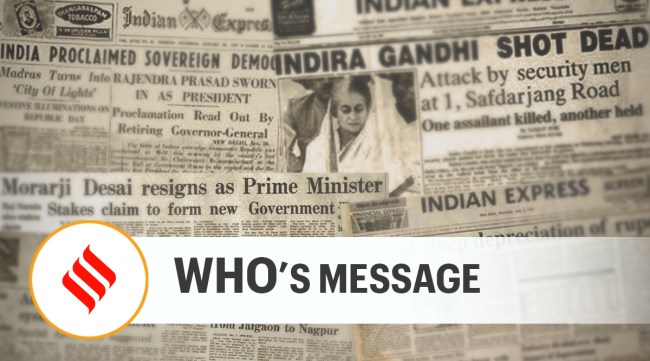Opinion WHO must take care its communication on Omicron doesn’t add to the sense of uncertainty about the virus
🔴 It is critical that global health authorities carefully measure every statement against the prevailing science. The message of caution should be delivered while taking care to do nothing that might sound alarmist
 Since the SARS outbreak in the early years of this century, it has been evident that the world requires an efficient alert system when confronted with microbes that do not respect national boundaries.
Since the SARS outbreak in the early years of this century, it has been evident that the world requires an efficient alert system when confronted with microbes that do not respect national boundaries. Two weeks after the South African medical authorities alerted the world about the Omicron variant of SARS-COV2, there’s no clarity about the magnitude of the threat posed by the latest mutation to the pathogen. While early reports indicate that the variant causes mild infections, there are understandable fears about its transmissibility and potential to evade vaccines. Travel restrictions have not stopped Omicron from dispersing in more than 50 countries. The WHO has criticised such restrictions but at the same time, its officials have talked about the highly infectious potential of the virus. Instead of exercising a calming influence, the premier health body’s messaging on Omicron seems to have added to the sense of uncertainty.
At different points in the past two weeks, WHO officials have given statements that make joining the dots difficult. For instance, they have said that Omicron could “change the course of the pandemic”, and it could lead to vaccine hoarding. And, then revised their initial surmise about the transmissibility of the variant by saying that the “exact impact of Omicron is still difficult” to ascertain. Much of these discrepancies are, of course, because the science on Omicron is an evolving one and the global health body is right in underlining a safety-first approach, especially when it’s about adopting the well-known Covid protocols, including masking and observing physical distance. However, the experience of the past two years shows that unequivocal messaging is amongst the key essentials of managing the social and economic fallouts of the pandemic. The new variant has emerged at a time when the virus seems to be taking divergent trajectories in different parts of the world. Hospitals in large parts of the Western world are overburdened by the ravages of the Delta variant, while the pathogen seems to be at a low ebb in India, where schools and educational institutions are gradually beginning to resume physical classes. At such a juncture, it is critical that global health authorities carefully measure every statement against the prevailing science. The message of caution should be delivered while taking care to do nothing that might sound alarmist. It may not always be possible to avoid discrepancies in statements. But a careful explanation of the changed circumstances — the evolution of the state of knowledge, for instance — would do much to reassure people in a pandemic-weary world.
Since the SARS outbreak in the early years of this century, it has been evident that the world requires an efficient alert system when confronted with microbes that do not respect national boundaries. The WHO is the only agency equipped to take up this challenge. It must improve its ways of messaging.
This editorial first appeared in the print edition on December 13, 2021 under the title ‘WHO’s message’.





